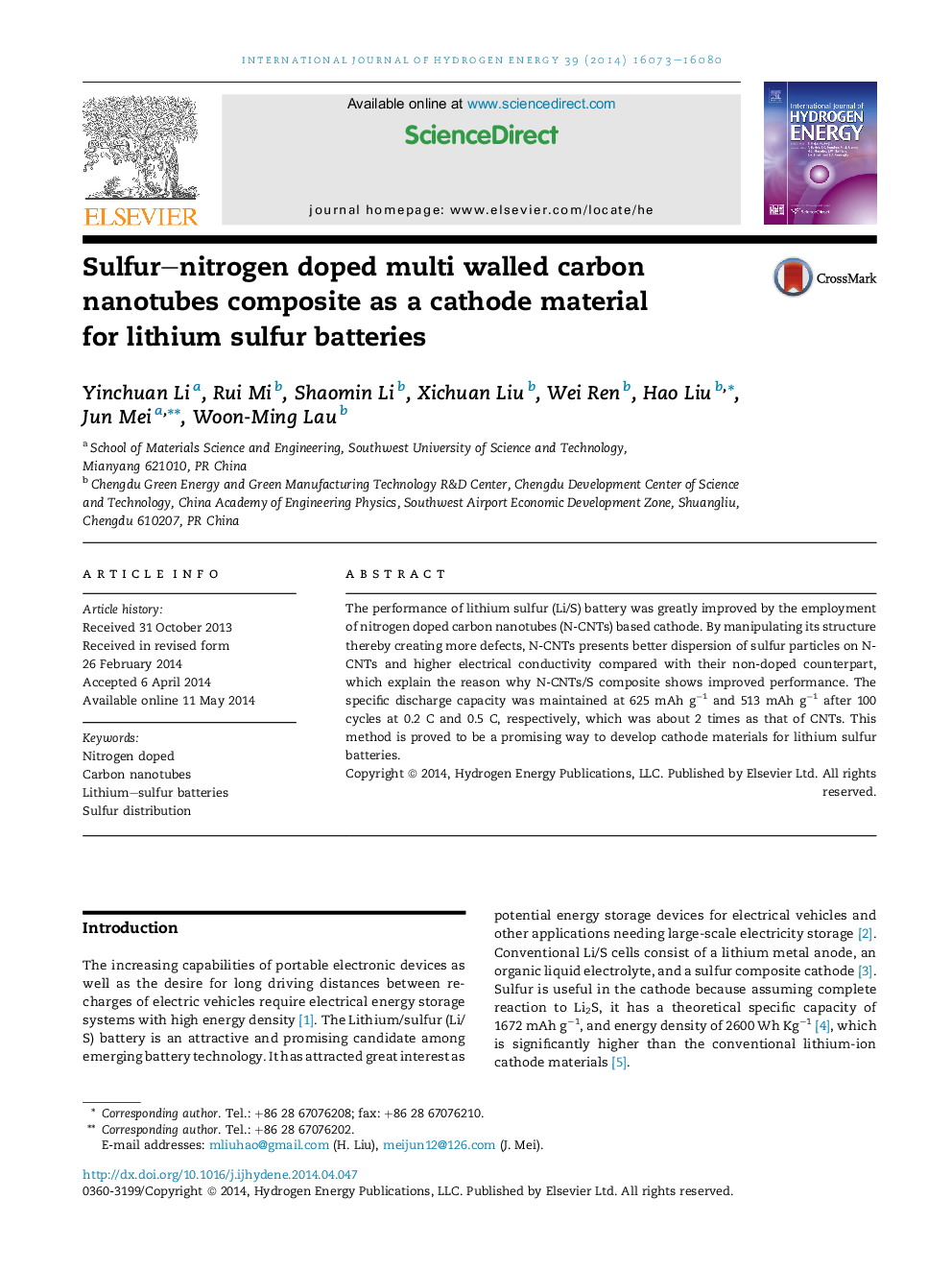| Article ID | Journal | Published Year | Pages | File Type |
|---|---|---|---|---|
| 1272455 | International Journal of Hydrogen Energy | 2014 | 8 Pages |
•The specific discharge capacity of N-CNTs based electrode is two times as high as that of CNTs after 100 cycles.•N-CNTs/S electrode possesses faster charge-transfer kinetics, which presents a better rate capability.•Nitrogen doping in CNTs leads to a better dispersion of S particles on the surface of N-CNTs/S.•The electrochemical impedance of N-CNTs/S electrode is also reduced due to nitrogen doping.
The performance of lithium sulfur (Li/S) battery was greatly improved by the employment of nitrogen doped carbon nanotubes (N-CNTs) based cathode. By manipulating its structure thereby creating more defects, N-CNTs presents better dispersion of sulfur particles on N-CNTs and higher electrical conductivity compared with their non-doped counterpart, which explain the reason why N-CNTs/S composite shows improved performance. The specific discharge capacity was maintained at 625 mAh g−1 and 513 mAh g−1 after 100 cycles at 0.2 C and 0.5 C, respectively, which was about 2 times as that of CNTs. This method is proved to be a promising way to develop cathode materials for lithium sulfur batteries.
Graphical abstractFigure optionsDownload full-size imageDownload as PowerPoint slide
